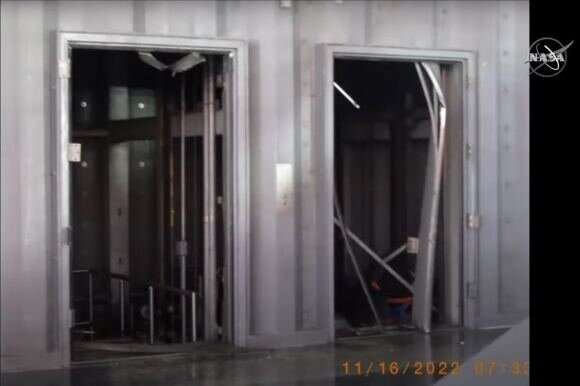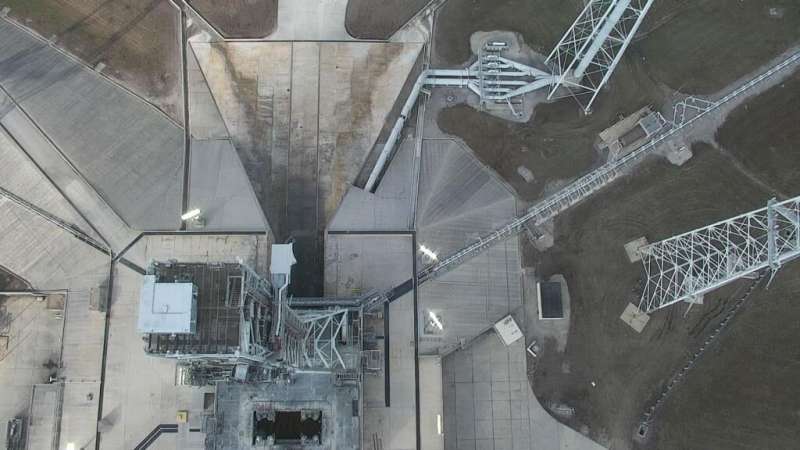Damage included discoloration and peeling of paint on the pad, two cameras that were rendered inoperable, as well as the destruction of a pair of elevator doors, blown out by the intense pressure at launch. The upper levels of the mobile launcher are currently only accessible by stairs, and the elevators will take several months to repair.

While the damage means some expensive repairs are required before a second flight, the pad "will be ready to support Artemis II and we had accounted for that previously in our pre-plan and our budget for the time between Artemis I and II," Sarafin assured reporters.
There was speculation after the launch that the damage was widespread, mainly because NASA asked journalists not to photograph the launch tower post-launch. NASA cited security violations relating to ITAR (International Traffic in Arms Regulations), claiming that some now exposed umbilical features would present a security risk if shared publicly.
NASA has since been more forthcoming with details of the damage. "We also did have some damage to pneumatic lines associated with gaseous nitrogen and gaseous helium, and that in turn caused the oxygen sensors on the pad to show that there were low oxygen readings until we got the leaks in the pneumatic lines isolated," said Sarafin.
In terms of debris from the rocket itself, two items were found during the pad assessment: throat plug material from the solid rocket boosters, which is purposefully expelled at liftoff, and caulking from the human-rated Orion capsule. It was unclear whether the caulking was removed during the launch, or during Hurricane Nicole, which tore through Kennedy Space Center a week before liftoff.
NASA says that the pad's ground systems, on the whole, exceeded expectations, and they are confident it will be ready for the next flight (as yet unscheduled), which will be the first SLS launch to carry humans to lunar orbit.
Meanwhile, the Orion capsule carried aboard Artemis I is mid-mission, having reached its closest approach to the moon already. It will return to Earth on December 11.
Provided by Universe Today

